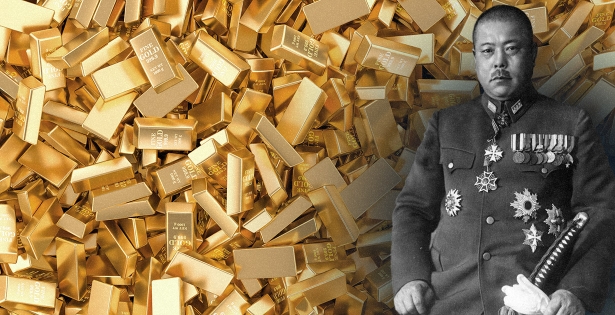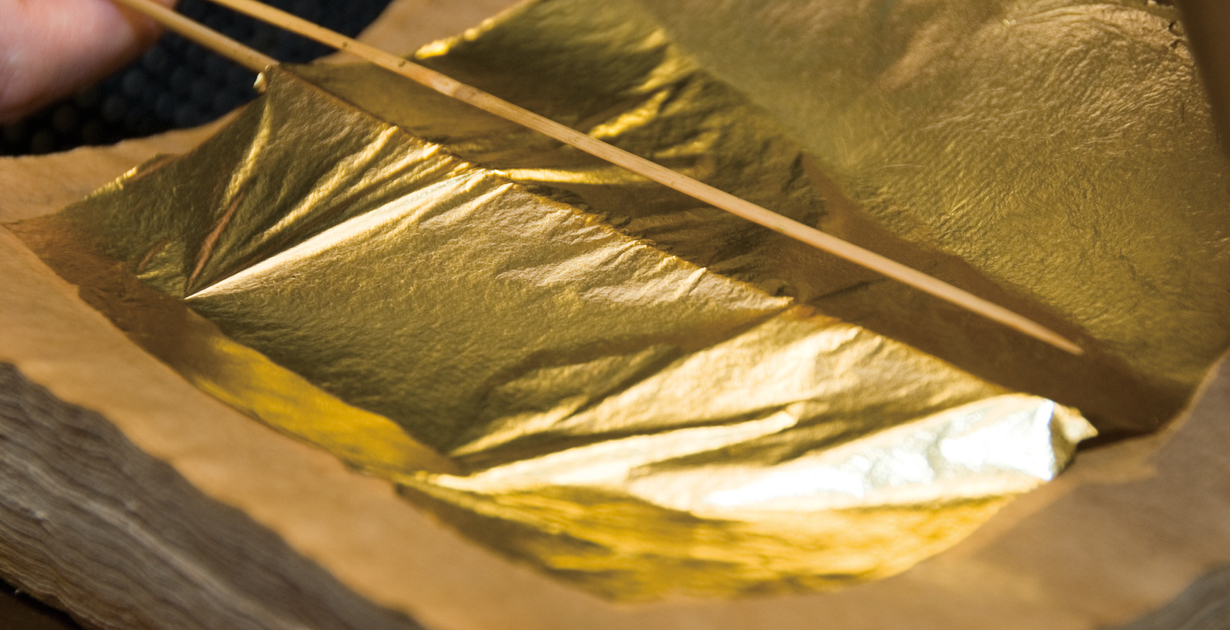
The Japanese gold leaf is the thinnest one the world
The golden pagoda of the Konjiki-dō pavilion, the glittering Buddhist statues, the picturesque lacquer boxes of maki-e and the finest decoration of the armor of Japanese knights – the true splendor of gold leaf, mostly produced in Kanazawa.
Kinpaku paper (delicate gold leaf sheets) has been produced in Japan for over 400 years. Kinpaku was a handicraft during the Middle Ages, but now the manufacturing process of kinpaku involves hammer-like machinery.
Paper makes gold thinner
Paper is especially important in the kinpaku-making process. Traditionally, a special Japanese paper “washi” made from fibers of the gampi tree was used – a highly durable material capable of withstanding paper tearing.

In the photo: gold leaf strips are sandwiched between “washi” sheets.
First, "washi" needs scrupulous preparation: the sheet gets pre-soaked in a special mix of fruit juice, ash and chicken eggs, then gently beaten out with hammers. The texture of the paper gets shiny and smooth.
Gold foil sandwiched between layers of flat and durable material attains perfection. The use of “washi” has been kept secret by Japanese manufacturers for a long time.
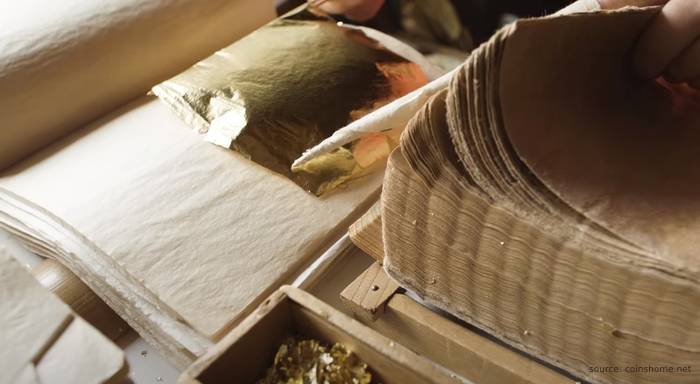
In the photo: gold sheets are applied with sticks in order to prevent one’s hands from sticking.
Japanese kinpaku foil has over seven shades, starting from light yellow to reddish-yellow. Colors of the alloy are modified by adding silver or copper. Copper gives the metal its red color, while silver whitens it. The content of gold ranges from 58% to 98%.
Hammer beats rather frequently, but gently
One-millimeter thick gold tape gets thinned out by a special processing machinery and cut into rectangles with a thickness of 0,001 mm.
In the next step, the blanks are placed between the sheets of paper and beaten out with a hammer at a speed of more than 500 beats per minute. This frequency is necessary for the foil to be both uniform and evenly thinned out.
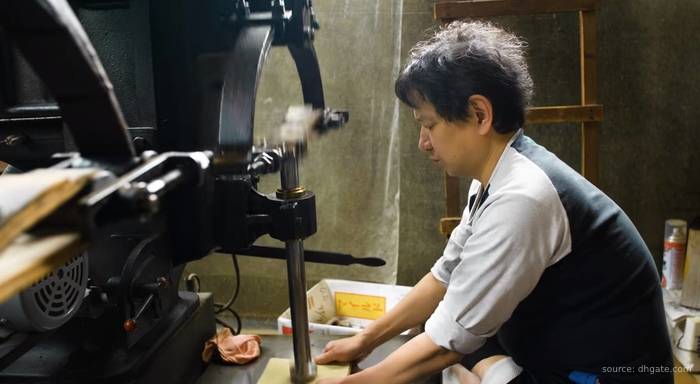
In the photo: in the gold leaf manufacturing process, the pace of hammer blows is more important than force.
The series of blows alternate intermittently. Gold heats up from the effects of the hammer, followed by a 15-minute pause. The cycle is repeated until the gold foil resembles the thinnest silk scarf.
At the end of the process, the foil becomes transparent and incredibly thin: 0,00001 mm thick, 100 sheets weigh only 2 grams.
Kanazawa’s pride
“Such a thin gold leaf is produced only in Japan. The main technological secret lies in our unique paper,” says craftsman Kenichi Matsumura, one of the 40 high-skilled specialists based in Kanazawa. Some of them work at the famous “Sakuda” factory, making 90% of the entire Japanese gold leaf. Others, according to ancient traditions, work in the family-owned workshops.
The Kanazawa Yasue Gold Leaf Museum was founded in 1971 by the local kinpaku craftsman Yasue Takaaki, who wanted to pass on to the descendants the century-old cultural heritage of the region’s craftsmen. Yasue collected nearly 300 items: paintings, ceramics, sculptures, sacred scrolls, furniture and costumes.
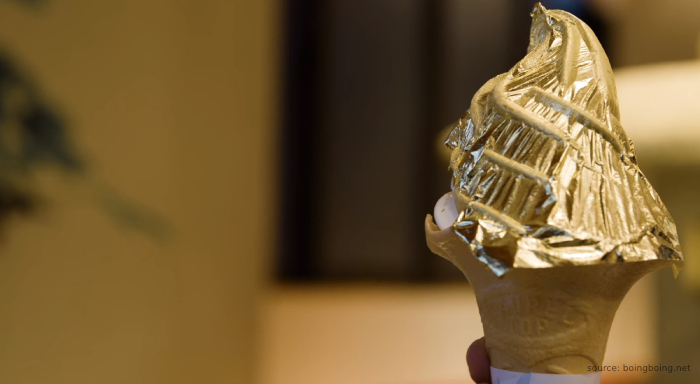
In the photo: soft ice cream with gold leaf – the museum buffet’s specialty.
In the city, there are plenty of souvenir shops that sell gold-plated items. You can attend a master class and cover your cell phone with gold or make a golden tattoo.
In the photo: all the souvenir shops are concentrated in the historical city center of the Edo period.
The global demand for gold leaf is growing annually. Artists, restorers and artisans use gold foil. Recently, cooks and cosmetologists have become consumers of the thinnest gold.
